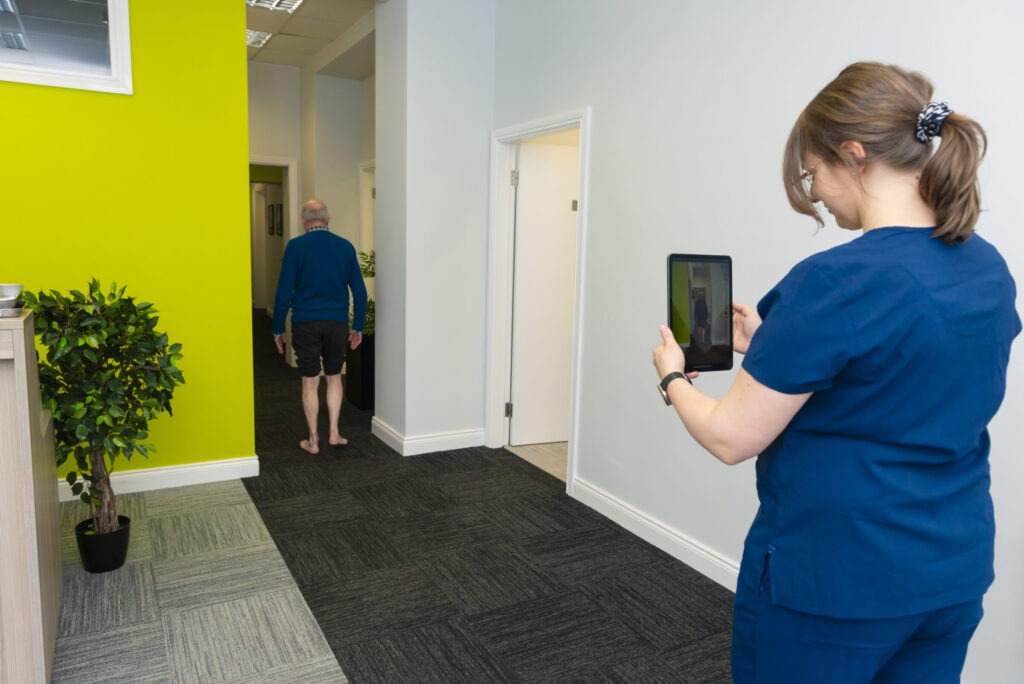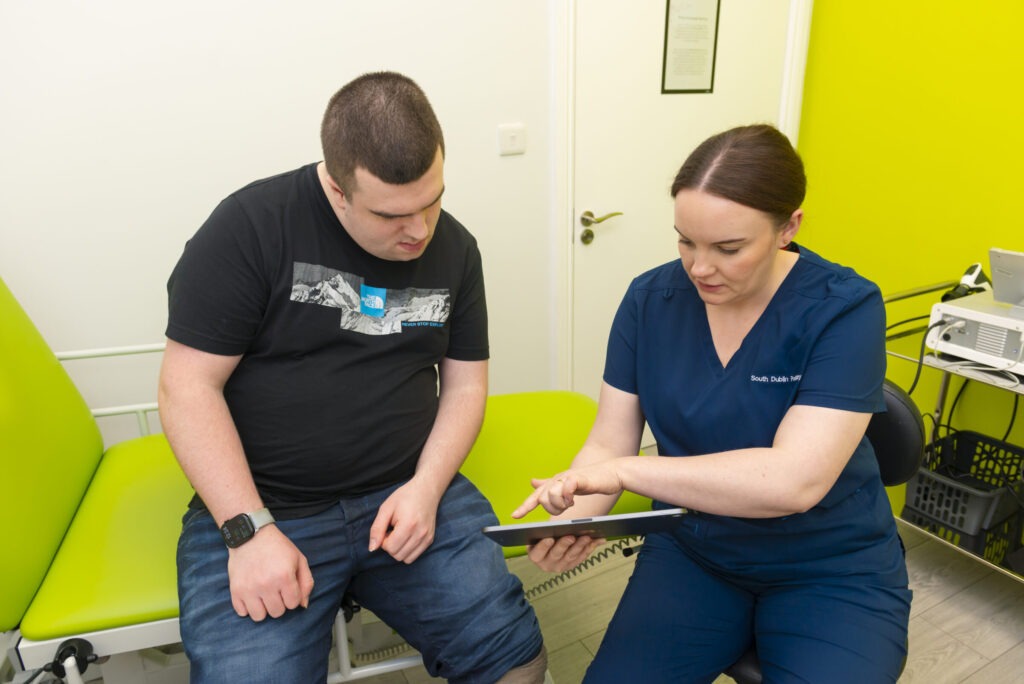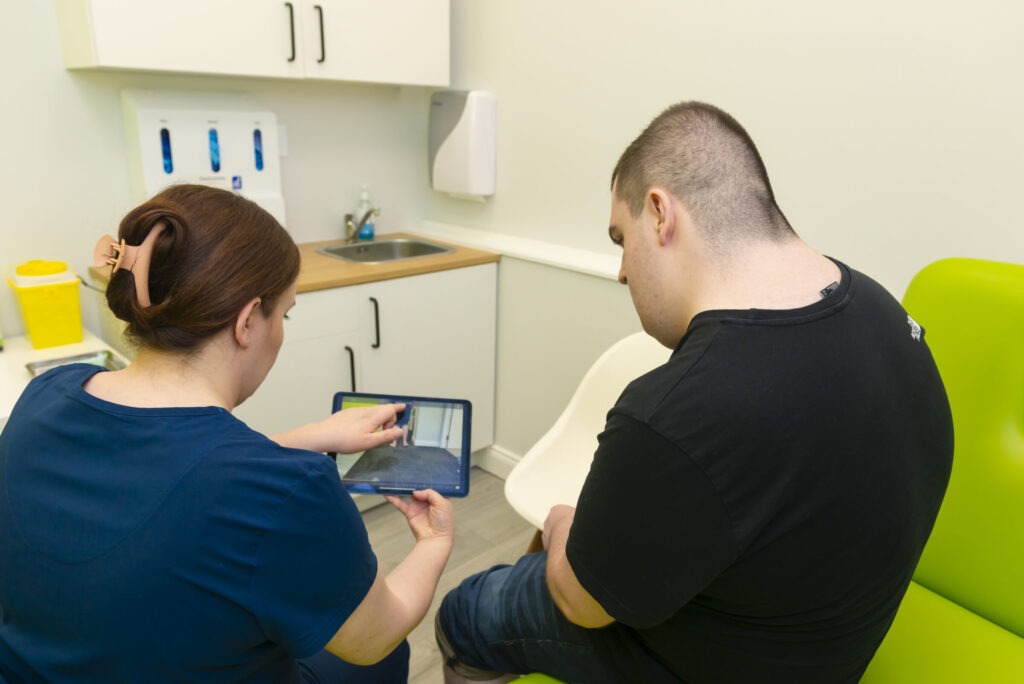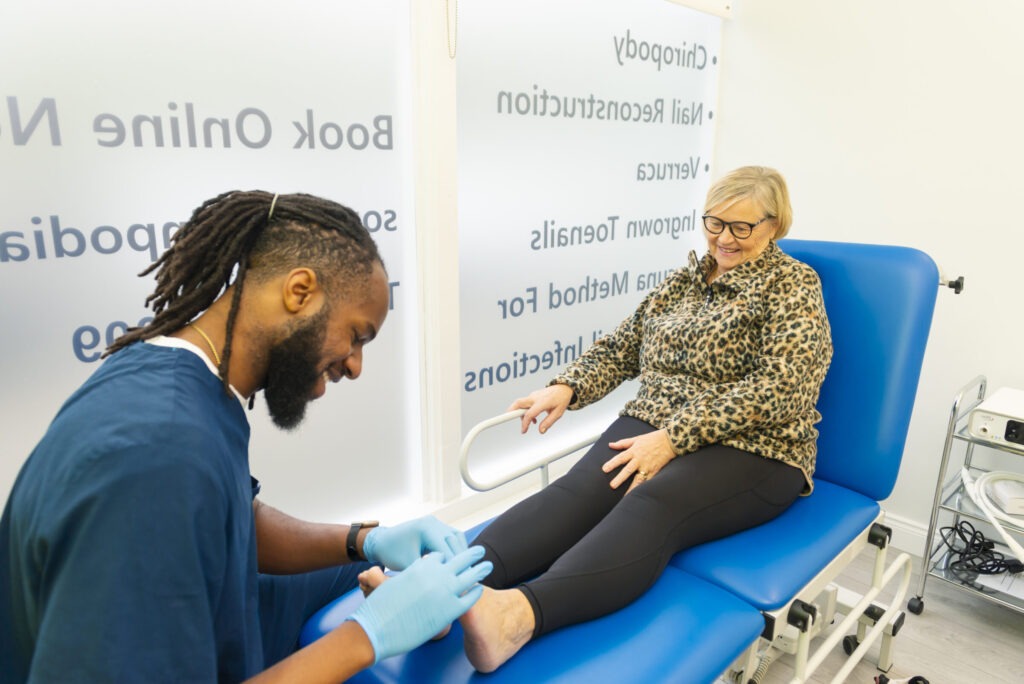
Biomechanical Examination involves observing how the body moves with walking and running. As Podiatrists, we pay attention to the way your feet move, but also how your body moves as a whole – it is all connected!
We assess the fluidity of movement throughout each step and break down each movement into individual segments to see where pathology may be originating from. It is important to identify deviations from the norm with gait, in order to treat contributing factors, and move more efficiently and freely.
A biomechanical examination is beneficial if you are experiencing pain in your hips, knees, ankles or feet. If you have any structural deformities causing pain such as bunions, toe deformities, high or low arches or if you have previously had an injury to your feet. Or if you are simply concerned with the way you walk or run!

We start off with a few questions regarding your medical history, current symptoms, how long you’ve had the pain or discomfort, what makes it worse, what makes it better and so on to help us understand your pain and its impact. We then assess how you stand, walk and check the range of motion of the joints such as the hip, knee, ankle and foot joints. We also assess muscle function and check for any muscle tightness which may affect the way you walk.
As podiatrists, we know the importance of a well fitting shoe, so we will ask you to bring a few pairs of the shoes you normally wear so that we can make sure they are the right kind of shoe for you.

Is a detailed assessment of how your body moves while walking to determine any biomechanical or structural abnormalities in the lower limbs. Using video recording software, our podiatrists can capture your movements and slow them down to better understand their impact on your body as a whole. It allows for a clearer, more objective analysis than what can be seen with the naked eye, leading to a more accurate diagnosis and treatment plan.
At South Dublin Podiatry, video gait analysis forms part of the biomechanical examination and our podiatrists use it daily to improve pain, injury and performance.

Some of our podiatrists are skilled in the use of ultrasound imagining to further enhance your assessment. Ultrasound is a real-time imaging tool used to visualise muscles, tendons, ligaments, and joints in motion. This non-invasive technology helps identify injuries, inflammation, and structural abnormalities with greater accuracy.
By incorporating ultrasound into your assessment, we can provide a faster and more precise diagnosis, ensuring targeted treatment plans for pain relief, injury management, and improved mobility.
This service is provided as part of our Advanced Biomechanical Examination only.

At the end of your appointment, our podiatrists will give you a full diagnosis, the reasons why you are experiencing the pain you have, what’s causing it and what needs to happen next to get you back to doing what you love. You will get a personalised written report which details our findings and recommendations.
The Biomechanical Examination takes 1 hour. We would recommend you to bring samples of your footwear (work shoes, football boots, dancing shoes, runners etc.) and to wear either loose fitting pants that can be rolled above the knee or a pair of shorts.
If you do have any Xray or MRI reports, please bring them along. Other than that leave the rest to us. Get all the answers you need and get back to living your life to the fullest.